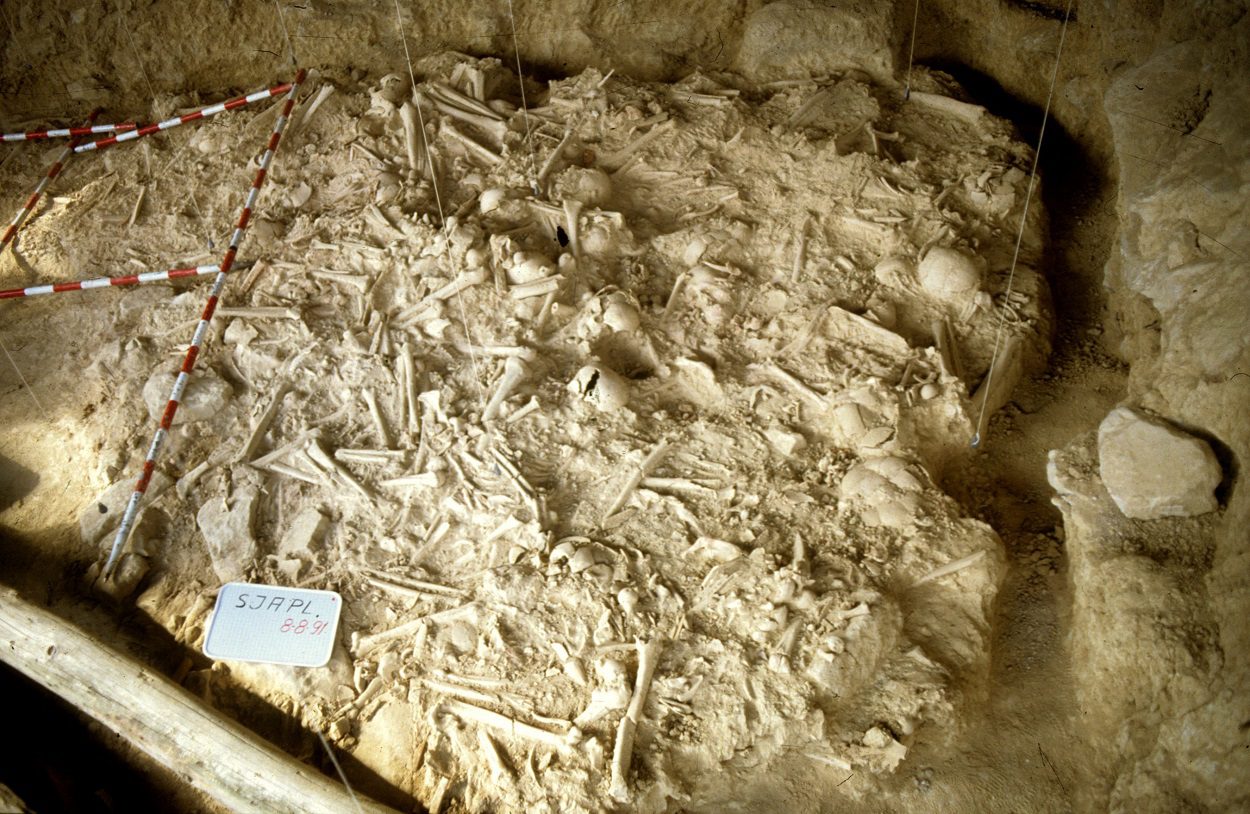Archaeologists have uncovered the skeletal remains of more than 300 individuals, indicating that a major conflict occurred in Laguardia, Spain, 5,000-years-ago.
The discovery was made by the University of Valladolid at the site of San Juan ante Portam Latinam, a rock shelter which was occupied during the Neolithic period around 3380–3000 BC.
The rock shelter is located in the the Rioja Alavesa region of north-central Iberia, which was first discovered accidently in 1985 when a bulldozer was widening a track.
In a paper published in the journal Nature, the researchers found the remains of 338 individuals, many of which have skeletal injuries, unhealed wounds and lesions, showing higher frequencies of injuries per individual than other demographic subgroups previously found in the region.
In conjunction with the discovery of at least 41 isolated arrowheads that appear to have penetrated tissues, as well as the disorganised and tangled overlay of numerous bodies, it suggests the potential involvement of a significant number of individuals, primarily men, but also including women and children.
According to the study authors: “Conflicts during the European Neolithic (approximately 9,000 to 4,000 years ago) remain poorly understood. Previous research suggested that these consisted of short raids lasting no more than a few days and involving small groups of up to 20-30 individuals, so it was assumed that prehistoric societies lacked the logistical capacity to sustain long, large-scale conflicts. It was previously thought that the first such conflicts in Europe occurred during the Bronze Age (approximately 4,000 to 2,800 years ago).”
Carbon dating of the skeletal remains places them between 5,400 and 5,000 years ago and is the largest violence-related event known for the European Neolithic which likely occurred over several months.
The origins of the conflict remain uncertain, however, the authors offer conjecture regarding numerous potential factors, one of which involves the discord between various cultural factions caused by biological stress, malnourishment, and fixed mobility in the region.
Header Image Credit : José Ignacio Vegas





